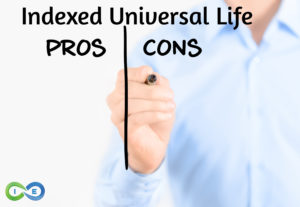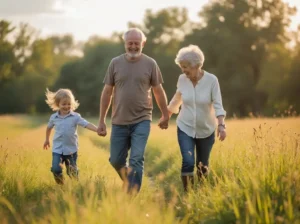You’ve chosen permanent cash value life insurance for your financial future, but the question remains: “Should you get Whole Life or Universal Life?” Don’t let the decision overwhelm you. This guide explores the similarities and differences between Whole Life Insurance (WLI) and Universal Life Insurance (UL), including its subtypes—Indexed Universal Life (IUL), Variable Universal Life (VUL), and Guaranteed Universal Life (GUL)—using 2025 market insights to help you find the best policy for your needs.
Table of Contents
- Market Overview: Whole Life vs. Universal Life Trends
- Similarities of Whole Life and Universal Life
- Differences Between Whole Life and Universal Life
- Comparison Table: Whole Life vs. Universal Life
- Which Is Right for You?
- Conclusion
Market Overview: Whole Life vs. Universal Life Trends
In 2024, whole life insurance captured a 36% market share of U.S. individual life insurance sales ($5.8 billion), while universal life, encompassing IUL (23–24%, $3.8 billion), VUL (14–15%, $2.2–$2.4 billion), and GUL (~1%), accounted for ~38% of sales, per LIMRA (limra.com). Whole life is favored for its guarantees, while universal life’s flexibility drives its growth, particularly in IUL and VUL (investopedia.com).
| Product Type | Market Share (2024) | Total New Premium | Growth Trend |
|---|---|---|---|
| Whole Life | 36% | $5.8 billion | Stable |
| Indexed Universal Life (IUL) | 23–24% | $3.8 billion | Up 3–7% YoY |
| Variable Universal Life (VUL) | 14–15% | $2.2–$2.4 billion | Up 12–16% YoY |
| Guaranteed Universal Life (GUL) | ~1% | N/A | Highest projected |
Industry Highlights
- Whole Life Dominance: Preferred for guaranteed premiums and cash value, ideal for legacy and estate planning.
- Universal Life Growth: IUL (3–7% growth) and VUL (12–16%) are surging, while GUL is poised for the fastest future growth.
- Consumer Preferences: Buyers choose whole life for simplicity and universal life for adaptability to changing needs.
Similarities of Whole Life and Universal Life
Whole Life Insurance (WLI) and Universal Life Insurance (UL) share core features that make them powerful options for permanent life insurance. Here’s what they have in common:
- Permanent Coverage: Both provide lifelong protection as long as premiums are paid, unlike term life insurance, which expires.
- Cash Value Growth: Both build cash value for retirement income, investments, or emergencies (except GUL, which has minimal cash value).
- Tax-Deferred Growth: Cash value grows tax-deferred, with withdrawals up to the basis (premiums paid) tax-free (death benefits are also tax-free).
- Tax-Free Loans: Policyholders can borrow against cash value tax-free, ideal for funding businesses or investments, as entrepreneurs like Walt Disney did (learn more about life insurance loans).
- Asset Status: Both are assets, sellable to life settlement companies for liquidity, e.g., to improve retirement living standards.
Differences Between Whole Life and Universal Life
Whole Life and Universal Life differ significantly in structure and flexibility, impacting cost, growth, and management. Below, we explore these differences, covering UL subtypes (IUL, VUL, GUL) where relevant.
2. Death Benefit
Whole Life: Guaranteed, fixed death benefit that cannot be adjusted, providing certainty for estate planning.
Universal Life: Death benefit is adjustable (subject to underwriting). IUL and VUL allow increases/decreases based on needs, while GUL offers fixed benefits for lifelong coverage (learn about GUL).
3. Cash Value Growth
Whole Life: Guaranteed 3–4% growth, plus potential dividends (not guaranteed) from mutual insurance companies, yielding 5–6% total returns. Growth is steady and risk-averse.
Universal Life: Growth varies by subtype. IUL ties cash value to market indexes with a floor and cap, VUL links to investment subaccounts with higher risk/reward, and GUL has minimal or no cash value, focusing on death benefits.
4. Policy Management
Whole Life: “Set it and forget it” with minimal oversight, ideal for those wanting simplicity.
Universal Life: Requires active management to ensure adequate funding, especially for IUL and VUL, to prevent lapse as costs rise with age. GUL is simpler but less flexible than other UL types.
Unsure about Whole Life or Universal Life?
Our expert advisors can help you compare Whole Life’s guarantees with Universal Life’s flexibility (IUL, VUL, or GUL). Schedule a free 30-minute consultation for tailored guidance—no obligation.
Comparison Table: Whole Life vs. Universal Life
Here’s a detailed comparison of Whole Life and Universal Life, highlighting key features:
| Feature | Whole Life | Universal Life |
|---|---|---|
| Premiums | Fixed | Flexible (fixed for GUL) |
| Death Benefit | Guaranteed, fixed | Adjustable (fixed for GUL) |
| Cash Value Growth | Guaranteed, fixed rate (3–6% with dividends) | Variable (IUL: market-linked, VUL: investment-based, GUL: minimal) |
| Policy Management | Minimal | Active (less for GUL) |
| Cost | Higher | Lower initially, may rise |
| Risk | Low | Moderate (IUL/VUL) to low (GUL) |
| Dividends | Possible (not guaranteed) | Not typical |
| Lapse Risk | Low (if premiums paid) | Higher (IUL/VUL if underfunded) |
Which Is Right for You?
Choosing between Whole Life and Universal Life depends on your financial goals, risk tolerance, and management preferences:
- Choose Whole Life If: You prioritize stability, guaranteed 3–6% growth, and minimal management. Ideal for conservative investors or estate planners seeking a dividend-paying whole life policy.
- Choose Universal Life If: You want flexibility in premiums and death benefits. IUL suits growth-seekers with moderate risk tolerance, VUL appeals to high-risk investors, and GUL fits those seeking affordable, lifelong coverage (explore UL options).
Caution: UL’s flexibility (especially IUL/VUL) requires careful funding to avoid lapse, particularly as costs rise with age. Whole Life’s fixed premiums eliminate this risk but are costlier.
Conclusion
Whole Life and Universal Life insurance both offer lifelong protection and cash value growth, but they cater to different needs. Whole Life provides unmatched stability, while Universal Life’s flexibility—through IUL, VUL, or GUL—suits diverse financial strategies. At I&E, we’re here to guide you through the decision. Schedule a free consultation with our Pro Client Guides to find the perfect policy for your family, investments, or business.
Find the Ideal Life Insurance Policy for Your Future
Ready to choose between Whole Life’s guarantees or Universal Life’s flexibility? Our independent advisors will analyze your needs to find the best policy, whether it’s Whole Life, IUL, VUL, or GUL.
- ✓ Compare Whole Life and Universal Life options tailored to your goals
- ✓ Explore tax-free loans, cash value, and estate planning benefits
- ✓ Understand premium flexibility, growth potential, and risks
- ✓ Get expert guidance on top insurers and policies
Schedule your complimentary 30-minute consultation today to secure your financial strategy.
No obligation. No pressure. Just expert insights to find the right life insurance policy.





